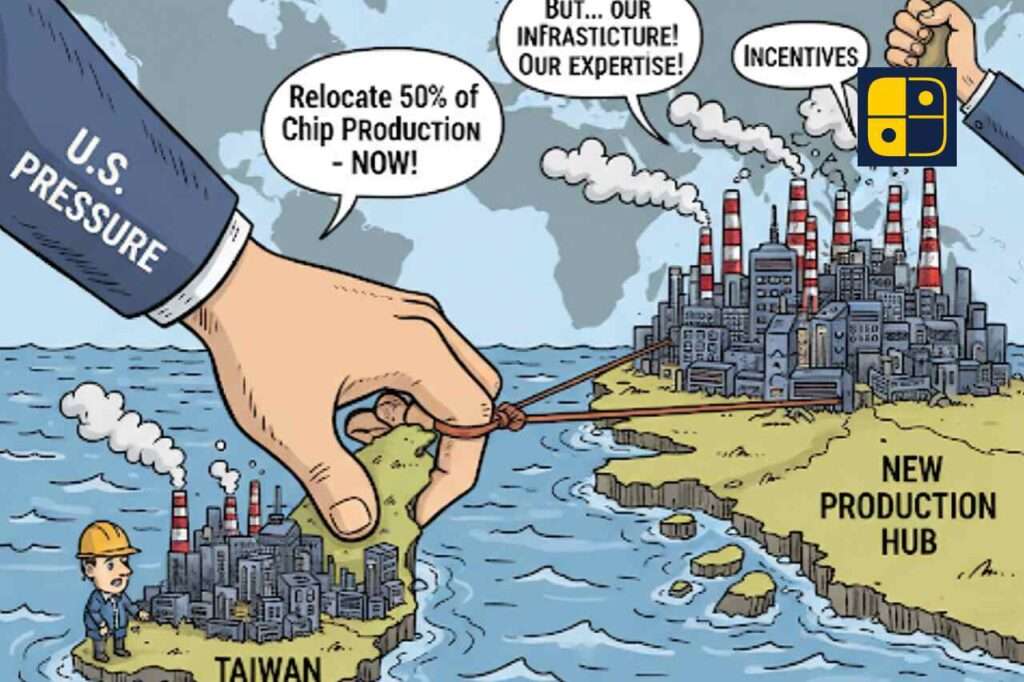The United States is exerting pressure on Taiwan to return roughly half of its semiconductor manufacturing capacity primarily at TSMC back to the United States, linking the request to continued U.S. military protection against China. Officials argue that Taiwan’s near monopoly on advanced chip manufacturing over 90% of the global market presents a grave danger of “a single point of failure.” U.S. Secretary of Commerce Howard Lutnick set an objective of 40% of semiconductor production in the United States by 2029, which would require over $500 billion in investment, whilst secretary of the treasury, Scott Bessent, advocated for an immediate shift of 30% to 50% back to the United States. On October 1, Taiwan flatly rejected the request, arguing it would make its industry “hollow” and undermine its “silicon shield.”
While Trump previously negotiated $165 billion in investment from TSMC in the U.S., experts have stated that it will take decades for Taiwan to shift supply chains. The dispute raises questions about the risks of U.S. economic coercion and an existing risk of increased belligerence from China toward Taiwan, even though all parties oppose China. The overall market reaction was cautious as chip stocks declined. No agreement has been reached, and Trump has hinted that, if Taiwan does not want to comply, it will lead to tariffs.

